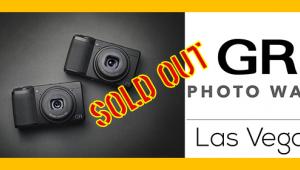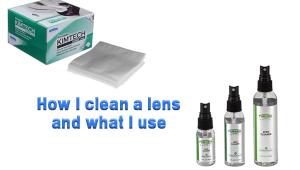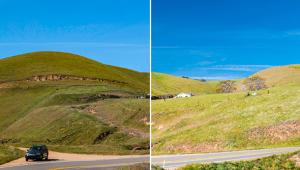Cokin Creative Filter System

Cokin filters were distributed by Minolta Corporation for well over 20 years, beginning around 1980 or thereabouts. I began using them at the very beginning, and in my lifetime have taken thousands of pictures through Cokin filters. I even won a contest back in 1981, and a romantic photo I shot at a caf in Montreal was published in a Cokin brochure for years—may still be in some parts of the world. I shot it with a Dreams filter which I still own.
Then I stopped using Cokin filters. Digital cameras, image editing software and a highly refined sense of personal laziness conspired to make Cokin filters less attractive to me. What a mistake!
Cokin filters have always been correctly described as “The easy and inexpensive way to enjoy creative photography.” They still are. On digital cameras they become even more attractive for three reasons. First, DSLRs with Live View and compact cameras in general provide large LCD monitors that allow you to preview the filter effect and make micro-adjustments until you get things just so. Second, because you can preview the final results immediately you can keep finding new creative angles and variations. Finally, you can enhance the results with any good image editor. No, you cannot duplicate the effects exactly in Photoshop, regardless what you may read elsewhere. Yes, you can modify the results for even greater enjoyment.
So yesterday or the day before I was shooting with a bruised Panasonic Lumix DMC-G1 and realized that it has three features that make it a good match for Cokin filters: a 52mm filter thread, a non-rotating manual zoom and a large, bright LCD monitor. I refer to this camera as “bruised” because it’s contusion blue in color and arrived loose in its box without packing material—but that’s a story for another time. Anyway, it’s a very capable camera on many levels, and it’s a perfect camera for Cokin filters.
Slip the metal 52mm adapter ring into the hard plastic filter holder: that’s step one. Then carefully screw the combination onto the front of the lens. Next, select the filter you want to use and slip it into one of the slots in the filter holder. How hard is that? You can use more than one filter at a time and you can preview the effect right on the LCD. Cokin even offers a filter holder that works with many compact, non-SLR cameras.
I’ve always been partial to Cokin Graduated filters. They are clear on one half and have color on the other. The clear and colored portions meet in the middle with a graduated blend, hence the name. Imagine a sunset. Now imagine a light orange filter enhancing the sky while the entire area below the horizon is left unfiltered. You’re getting the idea.
Cokin Star filters, Multi-image, Diffusion and the legendary Sepia Filter are fun to use, too. The system is easy to like and not at all expensive. If you’re reluctant to buy a pricey new lens because of the threatening economy, but still want to enjoy some affordable cameras toys, take a look at the Cokin Creative Filter System.
- Log in or register to post comments

















































